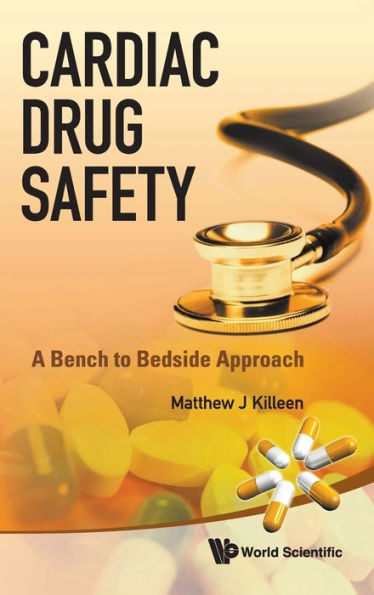Table of Contents
Foreword ix
Preface xi
Chapter 1 Challenges Facing the Pharmaceutical Industry in the 21st Century 1
Introduction 1
The Impact of Cardiac Toxicity on the Pharmaceutical Industry 4
References 10
Chapter 2 The Cellular Basis of Cardiac Electrophysiology 11
Introduction 11
The Initiation of the Heart Beat 11
The Ventricular Cardiac Action Potential 12
The Relationship Between the Cardiac Action Potential and the Electrocardiogram 15
Ion Channels Underlying the Cardiac Action Potential 15
Summary 26
References 26
Chapter 3 Clinical Arrhythmia Syndromes 31
Introduction 31
The Long QT Syndrome 31
Congenital Long QT Syndrome 32
Drug-Induced QT Prolongation 34
Summary 40
References 41
Chapter 4 The Mechanisms Underlying Cardiac Arrhythmias 43
Introduction 43
Mechanisms Underlying Cardiac Arrhythmias 43
Abnormal Automaticity 44
Early and Delayed Afterdepolarizations 44
Re-entry 45
Transmural Dispersion of Repolarization 48
How does Action Potential and QT Prolongation Generate Arrhythmias? 51
Does the M-Cell Play a Role in Arrhythmia Induction in Humans? 53
Using Mouse Models to Study Arrhythmia Mechanisms 54
Experimental Studies Exploring the Relationship Between Changes in Transmural Repolarization Gradients and Arrhythmias in Mouse Hearts 57
Arrhythmia Mechanisms and Novel Antiarrhythmic Approaches Identified Using the Hypokalemic Mouse Model 58
Summary 67
References 67
Chapter 5 The Mechanisms Underlying Drug-Induced Arrhythmias 73
Introduction 73
The Classical Model of Drug-Induced QT 73
Prolongation and Proarrhythmia: HERG Blockade Additional Mechanisms Contributing to 74
Drug-Induced Arrhythmias Drug-Induction Activation of Depolarizing Ion Channels 75
Drug-Induced Changes in Ion Channel Expression 77
Drug-Induced Sodium Channel Dysfunction 78
Summary 80
References 80
Chapter 6 Assessing Cardiac Safety in Drug Development 83
Introduction 83
Preclinical Evaluation of Cardiac Drug Safety 83
The ICH S7B Guidelines 84
Single Cell Safety Studies 87
The Purkinje Fiber Model 88
The Ventricular Wedge Model 89
Isolated Heart Models 90
In Vivo Models 92
The Impact of Species-Related Differences in Cardiac Electrophysiology on Preclinical Drug Safety Assessment 95
Methods to Provoke Arrhythmias in Preclinical Studies 97
Clinical Evaluation of Cardiac Safety 100
Additional Biomarkers to Detect Drug-Induced Proarrhythmia 104
Recent Case Studies of Drug-Induced Proarrhythmia 109
Propoxyphene-Induced Cardiac Toxicity 110
Clinical and Experimental Studies of Propoxyphene-Induced Cardiac Toxicity 110
Regulatory Assessment of Propoxyphene's Cardiac Safety Profile 113
Dolasetron-Induced Cardiac Toxicity 113
Clinical and Experimental Studies of Dolasetron-Induced Cardiac Toxicity 114
Regulatory Assessment of Dolasetron's Cardiac Safety Profile 116
Summary 117
References 118
Chapter 7 Pediatric Cardiac Safety 123
Introduction 123
Cisapride-Induced Pediatric Cardiac Toxicity 124
Potential Mechanisms Underlying Cisapride-Induced Cardiac Toxicity in Pediatric Patients 126
Drug-Induced Cardiac Toxicity in the Embryonic Heart 130
Summary 132
References 134
Chapter 8 Drug-Induced Atrial Fibrillation 137
Introduction 137
Atrial Fibrillation 137
Bisphosphonate-Induced Atrial Fibrillation 138
Adenosine-Induced Atrial Fibrillation 142
Corticosteroid-Induced Atrial Fibrillation 144
Implications for Cardiac Safety Testing During Drug Development 146
Summary 149
References 149
Chapter 9 Navigating the Future Path of Cardiac Drug Safety 153
Introduction 153
Disease-Driven Approaches to Cardiac Safety 153
Emerging Technologies for Cardiac Safety Assessment 157
New Proarrhythmic Paradigms 162
Engagement of Key Stakeholders to Advance Cardiac Safely Assessments 164
References 166
Index 169




